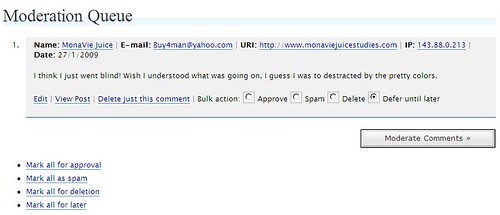Ever experienced being too overworked to come up with new and exciting ideas? Feeling you have nothing new to say? Three days of posting-silence is a symptom of the fact that our little group here at Medical Museion is in a pretty hectic ‘phase’ right now:
- We opened Design4Science less than two weeks ago after ten days of intense preparation work — it’s beautiful, but it took its toll.
- Some of us are teaching a 2,5 ects course in Medical Science and Technology Studies for students in the medical engineering programme (a joint programme between the Danish Technical University and University of Copenhagen).
- Several of us are very busy planning for the next exhibition — Split & Splice: Fragments from the Age of Biomedicine — which will open on 11 June. More about this later …
- We are also preparing an exhibition on the history and culture of protein research for the official opening of the new Center for Protein Research at the Faculty of Health Sciences in early September. More about this later …
- We are also finalizing a glossy prospectus about the future renovation and expansion of Medical Museion that shall be sent to a selected number of foundations shortly. More about this later …
- Some of us are also preparing the second phase of a grant application about visualization practices in contemporary health sciences; and one of us is preparing an application to the Research Council for Culture and Communication. More about this later …
- Most of us are involved in writing chapters for our planned anthology about biomedical curatorship — a very good British publisher has expressed great interest and we have to prepare the final manuscript. More about this later …
- We are writing project descriptions for a couple of new phd-scholarships within the frame of the University of Copenhagen Center for Healthy Ageing programme. More about this later …
- We are beginning to discuss how to make our research, teaching, cultural heritage and public outreach efforts work more smoothly together, for example by a more narrow intellectual focus. More about this later …
- And then there are all the daily things — like writing research papers; trying to postpone deadlines; responding to urgent calls from people who want us to take a look at their old medical stuff before they throw it out; balancing the budget; promoting the museum to the Danish media; planning for the 2010 exhibitions; etc., etc. More about all these things later …
It’s probably all these ‘More about this later…’-things that drain the brain and press whatever new thoughts that temporarily enter your consciousness back into oblivion. That’s at least how I feel right now. Since I haven’t seen much from my co-bloggers’ keyboards recently, they probably feel the same.
I guess what I wanted to say is: Forget about everything you’ve heard about a university museum being a boring place to be! It’s definitely not — it’s an exhaustion machine.

 Seems like museum 2.0 has already come of age. Because the
Seems like museum 2.0 has already come of age. Because the 